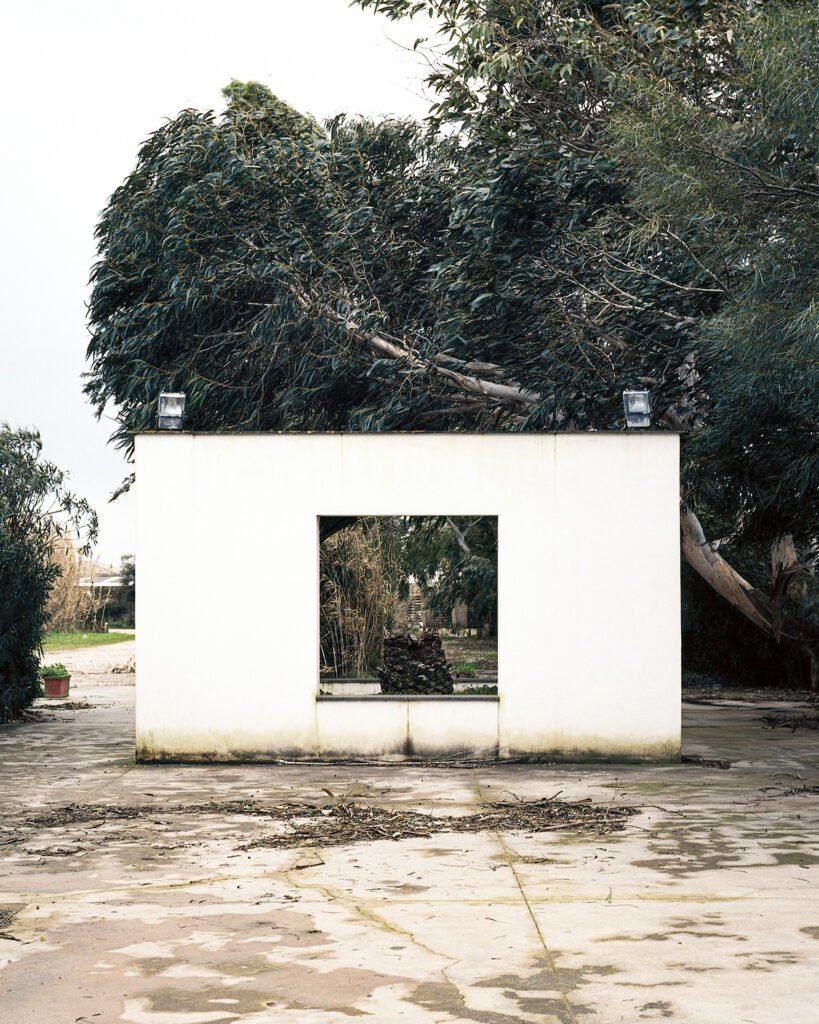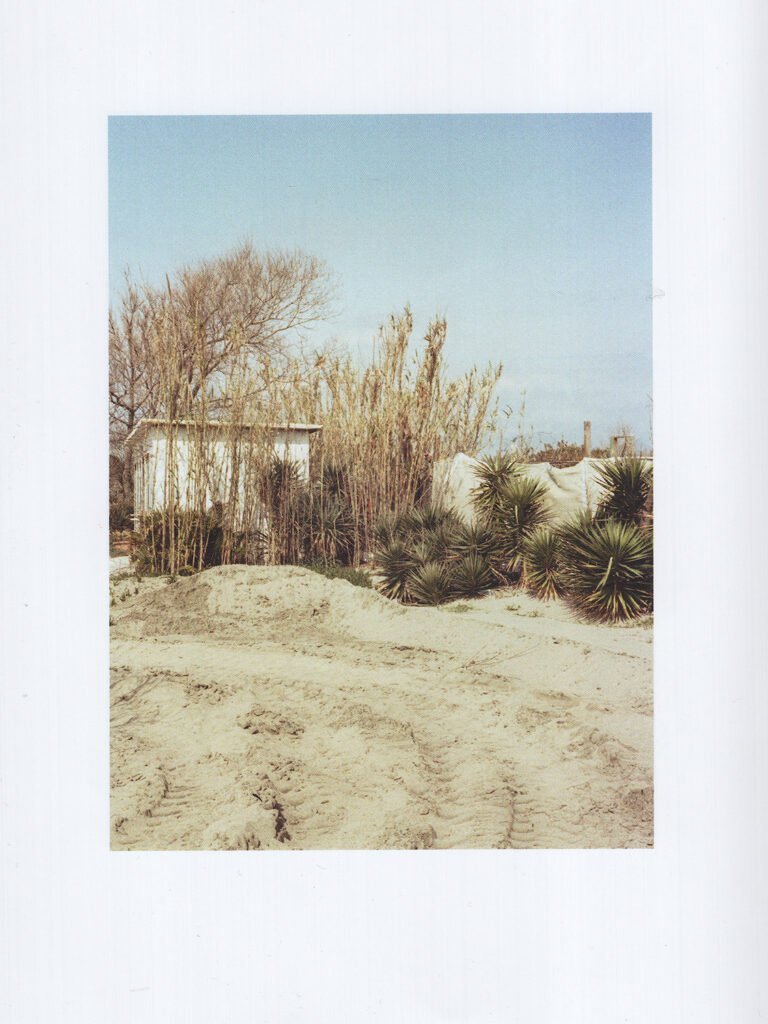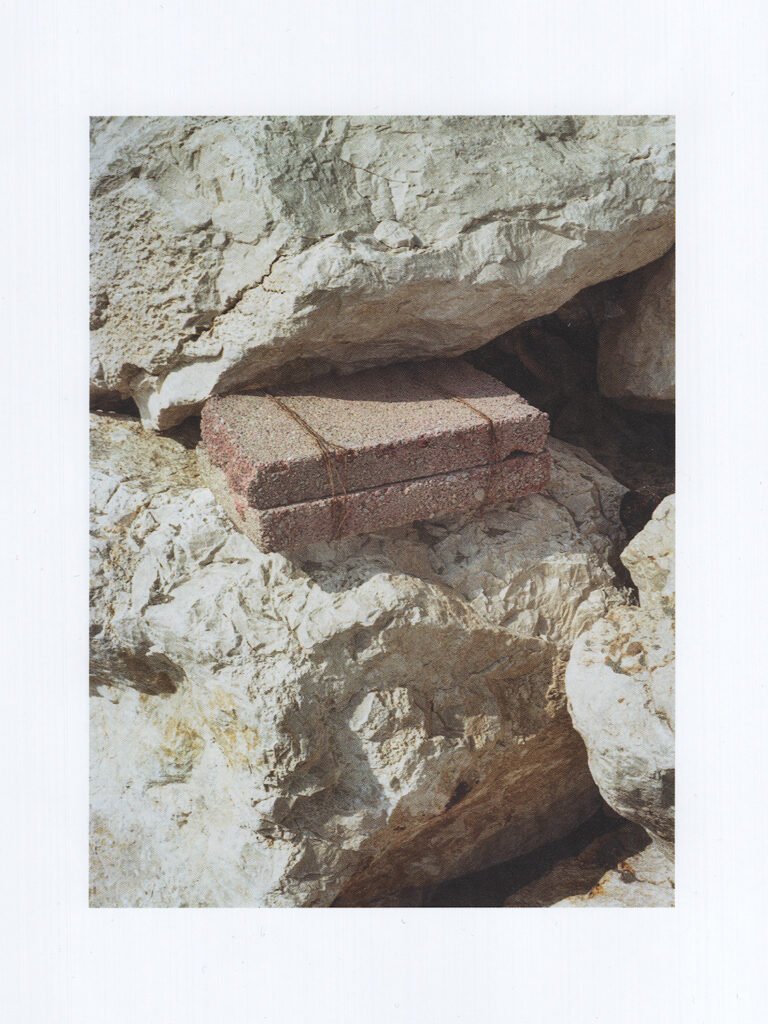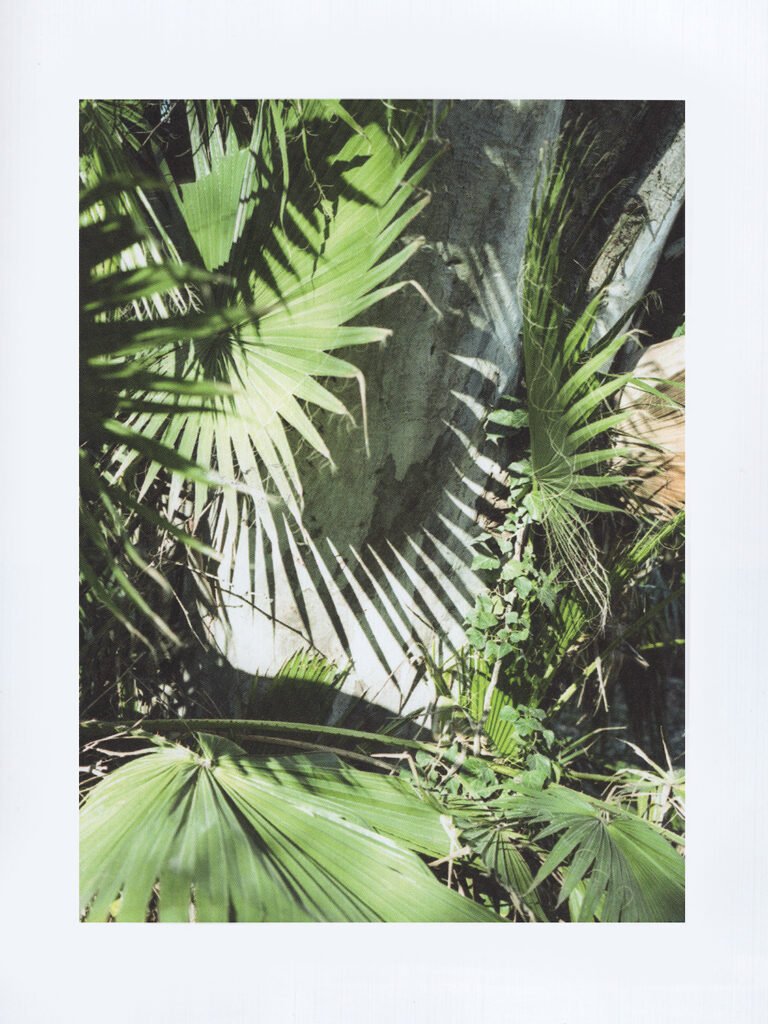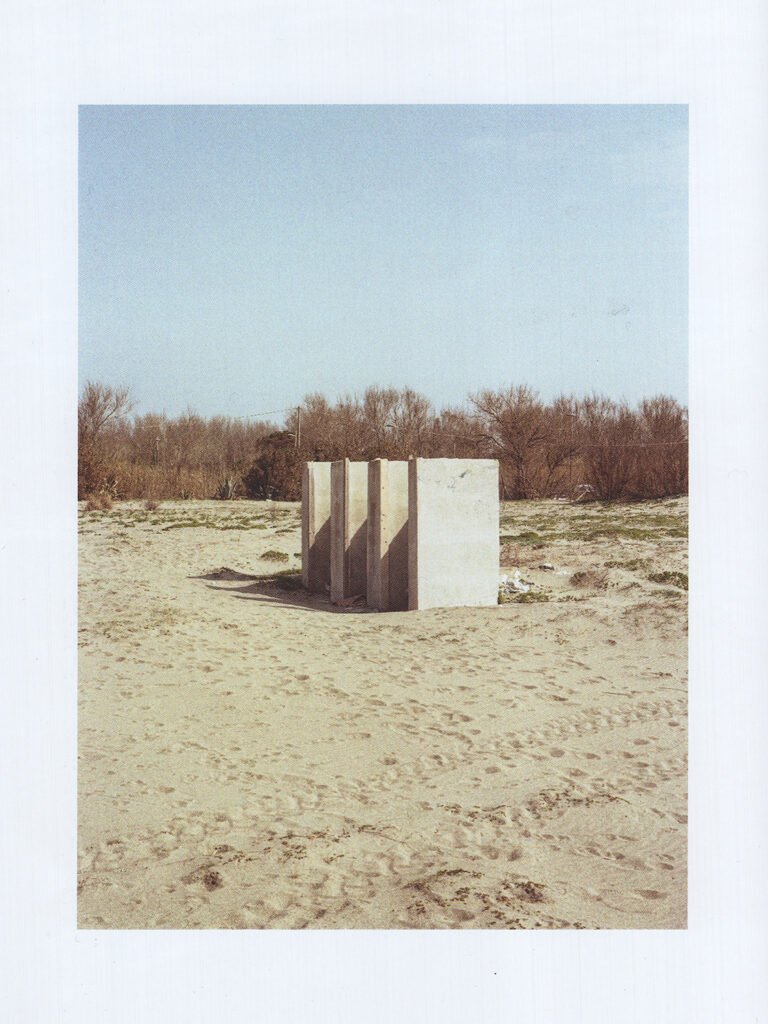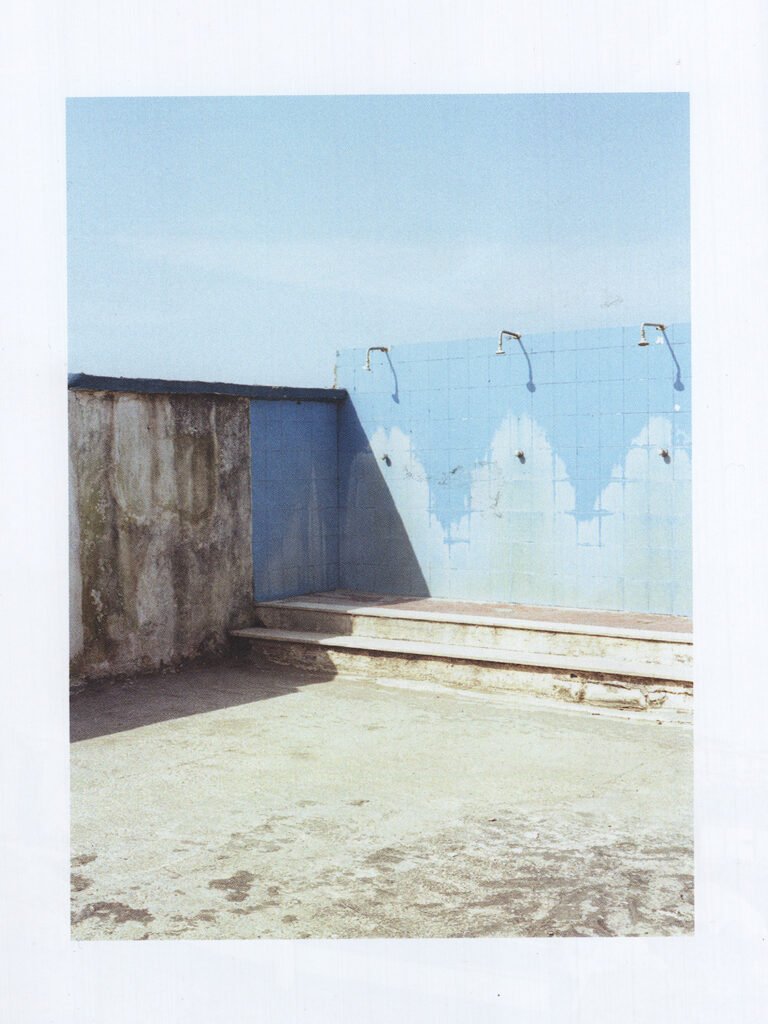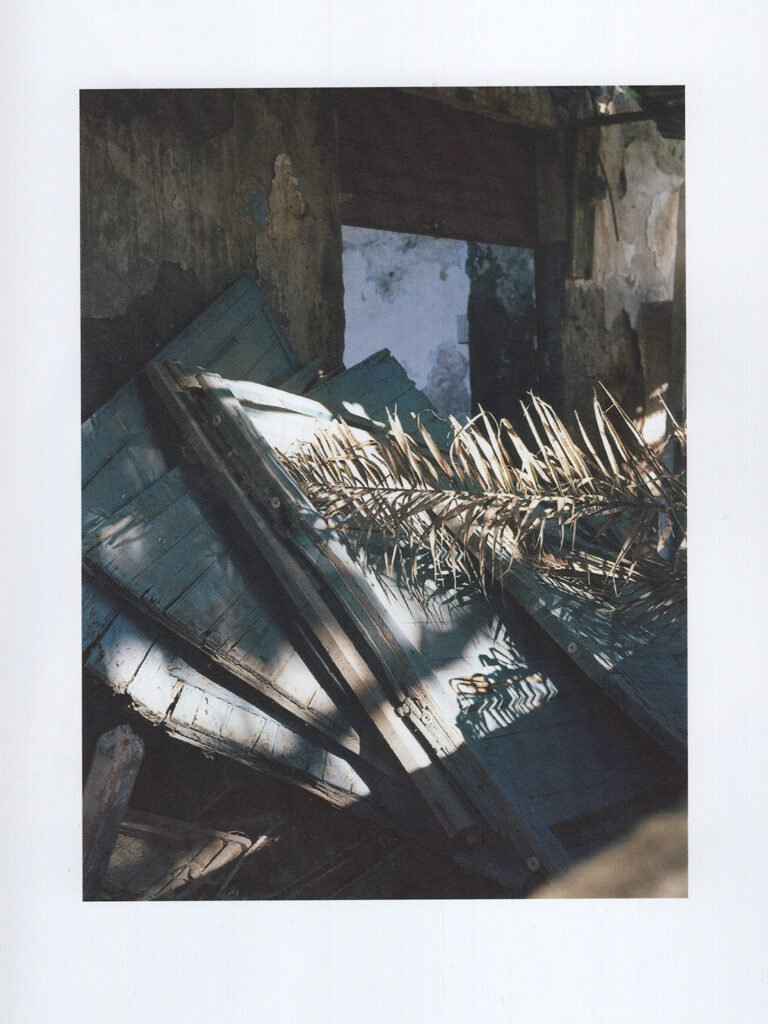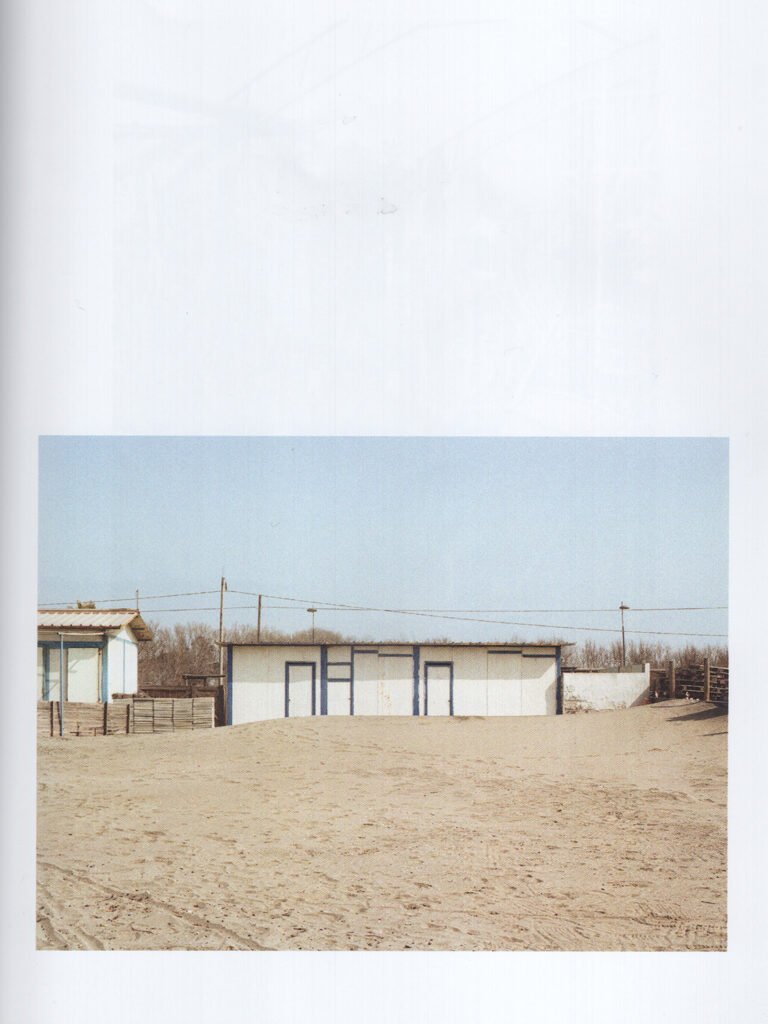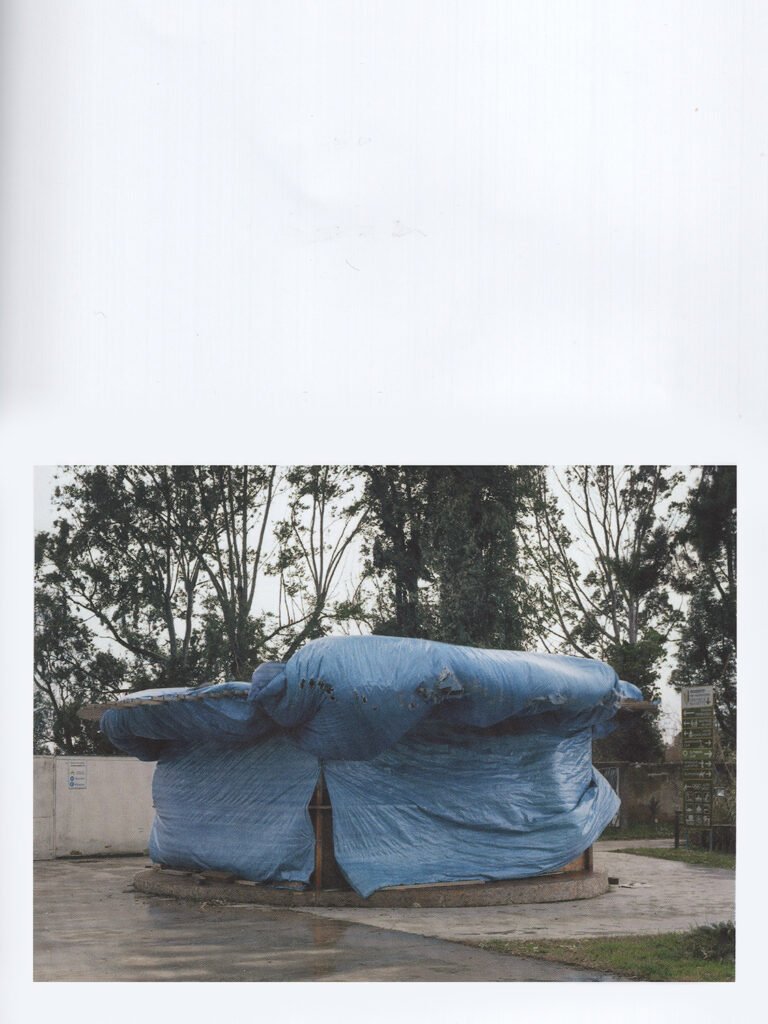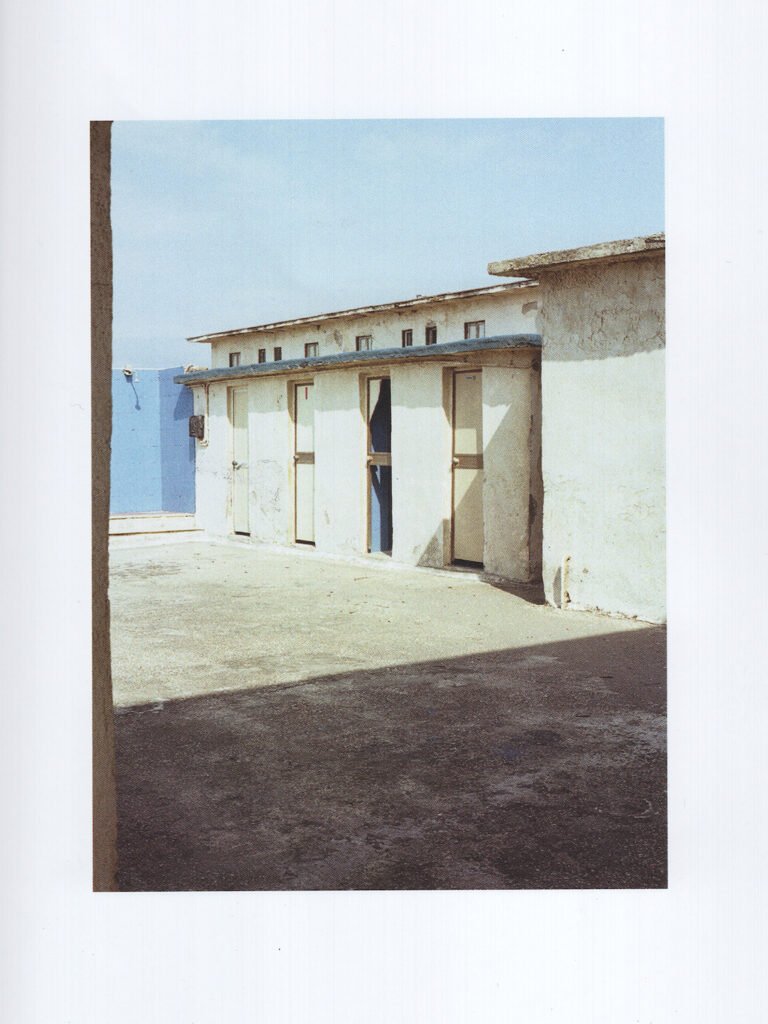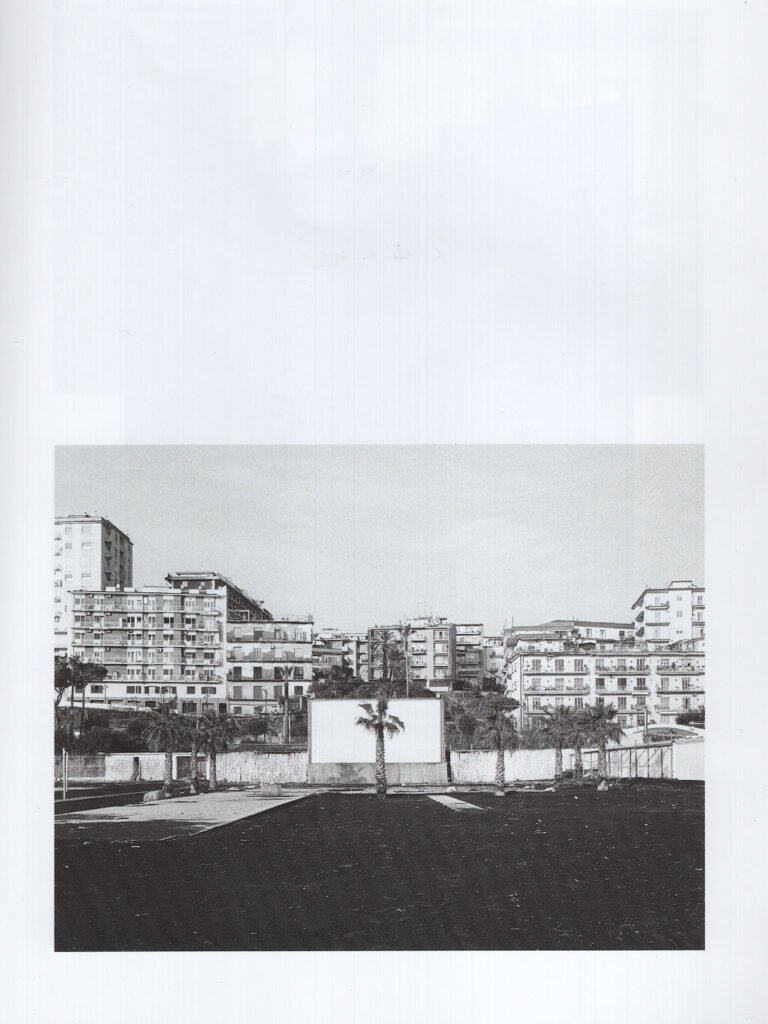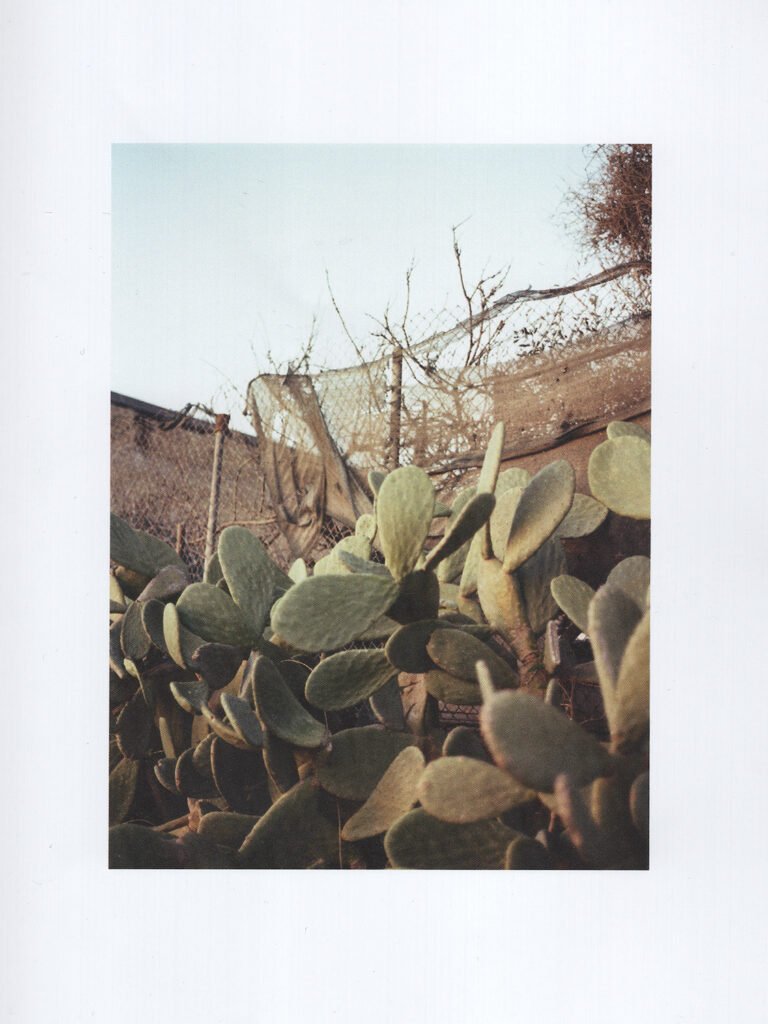Abandoned structures, boats resting on solitary beaches, sculptural rocks, palm trees and cactuses desiccating under the sun – the visual experience of leafing through Greta Valente’s “Tre mesi” is a physical and spiritual journey through Southern Italy, between Naples, Caserta, and Salerno. Perceiving the elsewhere as a ‘negative mirror’, as Italo Calvino puts it, Valente explores the self, as a traveller recognising ‘the little that is [their], discovering the much [they have] not had and will never have.’ (1974 [1972]). Projecting in the other than self, not in an attempt to own, or alter it, the artist identifies both with the space photographed and the camera. She inhabits the space through the mediated act of photography, performing a visual ballad of static sentimentality.
Stillness reigns over these fragments of reality, intriguing the viewer even before they pause on the details. Observing Valente’s photographs, Luigi Ghirri’s 1978 classic writing in his book “Kodachrome” comes to mind, in which Ghirri unveils his varied sources of inspiration: ‘things and life’, which image make ones able to distinguish the identity of humans. Through the perspective of Valente’s camera, this image is re-activated, always a fragment drawn from the bigger picture of reality. Reminiscent of Ghirri’s ephemeral architectures and the world of provinces, objects that are considered unbeautiful although charged with memories and vernacular significance, these pictures are a trace of time and belonging. Not only Valente’s photographs are traces of humanity, but also they bring back to life the dismissed and often refused nostalgic bond between humans and what is no longer in use. Silence scatters the memories of these peripheral places, yet stillness transforms the ordinary in a self-portrait of the author. Somewhat inward-looking, Valente’s documentary style intersects with the diaristic mode. Nonetheless, the title “Tre mesi” (Three Months) suggests the journal-like nature of the photobook.
Within each image a whole story seems to unfold, each one building up the nostalgia and internal void of the last. There are a lot of images directly leading the viewers to empty themselves out, inhabit the other, recognise what they already have, and discover what they have not (Calvino, (1974 [1972]). These are images to get lost into. They purely serve as metaphors of the places they frame. The spectator is nurtured to focus on the sensations evoked by the colours, the impeccable compositions, and shapes mapped out by the light and shadows. Projecting the self in the other is an act of affirmation of existence, and Valente believes in that, as the only words in the book state: “Dobbiamo riversarci interamente fuori di noi, per essere.” [We must entirely project ourselves in the other, to be.]. It is by doing so that those who see transfer their sensations to another object or
person. Part of the allure of a photobook like “Tre mesi” is how it fulfils the aesthetic of an art object and the tight bond one can feel with the places and objects photographed.
Greta Valente was born in Aosta (Northern Italy) in 1996. In 2018 she graduated with honors in Photography and Visual Arts at the European Institute of Design in Milan (IED Milan). This course gave her the opportunity to develop a strong interest in analogue photography, landscape and still life. It also gave her the opportunity to participate in various workshops and collaborations such as for Domus during Design Week. In 2019 she is co-creator of Pietra Studio. In 2021 she won the honorable mention for the portfolio reading at the Ragusa Photo Festival and published Tre Mesi. In 2022 the project Come un fiore senza terra received a special mention in the Annual Urbanautica Institute Awards.
